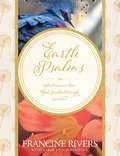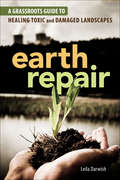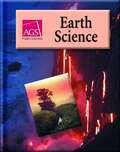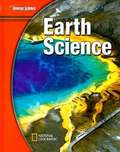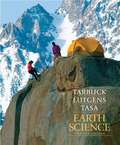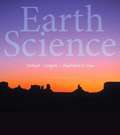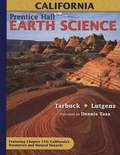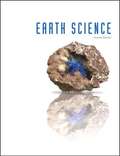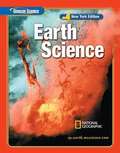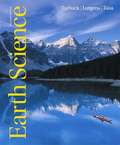- Table View
- List View
Earth Psalms: Reflections On How God Speaks through Nature
by Francine Rivers Karin Stock BuursmaMillions of readers have been transformed and inspired by Francine Rivers' bestselling novels Redeeming Love and A Voice in the Wind. “From the depths of the sea to the far reaches of space ARE COUNTLESS BLESSINGS THE LORD OFFERS YOU. IN THIS WEEKLY DEVOTIONAL beloved author J. Francine Rivers invites you to join her in seeking the Creator through the marvelous natural world we live in. Francine shares observations she's gathered over a lifetime of exploring--abroad and in her own backyard--and reflects on how they might apply to your daily life. What do the majestic redwoods, the persistent woodpecker, or a glorious sunrise reveal about our artistic and generous God? How could that change your outlook or the way you handle adversity? Stunning photography, Scripture excerpts, applications, and prayers accompany Francine's reflections, inspiring you to be encouraged. Be challenged. Be comforted. God's power is immense; His attention to detail is precise; His love for you is vast and unfailing. The proof is all around you.”
Earth Repair: A Grassroots Guide to Healing Toxic and Damaged Landscapes
by Leila DarwishMillions of acres of land have been contaminated by pesticides, improperly handled chemicals, dirty energy projects, toxic waste, and other pollutants in the United States alone. This toxic legacy impacts the environment, our health, our watersheds, and land that could otherwise be used to grow healthy local food and medicines. Conventional clean-up techniques employed by government and industry are tremendously expensive and resource-intensive and can cause further damage. More and more communities find themselves increasingly unable to rely on those companies and governments who created the problems to step in and provide solutions.Earth Repair describes a host of powerful grassroots bioremediation techniques, including:Microbial remediation-using microorganisms to break down and bind contaminantsPhytoremediation-using plants to extract, bind, and transform toxinsMycoremediation-using fungi to clean up contaminated soil and waterPacked with valuable, firsthand information from visionaries in the field, Earth Repair empowers communities and individuals to take action and heal contaminated and damaged land. Encompassing everything from remediating and regenerating abandoned city lots for urban farmers and gardeners to recovering from environmental disasters and industrial catastrophes such as oil spills and nuclear fallout, this fertile toolbox is essential reading for anyone who wishes to transform environmental despair into constructive action.Leila Darwish is a community organizer, urban gardener, and permaculture designer with a focus on using grassroots bioremediation to address environmental justice issues in communities struggling with toxic contamination of their land and drinking water.
Earth Science
by Robert H. Marshall Allen B. RosskopfThis book covers the area of earth science. It also focuses on science skills that scientists use. These skills include asking questions, making predictions, designing experiments or procedures, collecting and organizing information, calculating data, making decisions, drawing conclusions, and exploring more options
Earth Science
by Robert H. Marshall Allen B. RosskopfIf you want to learn about earth, moon system, solar system, stars, galaxies, minerals, rocks, weather, climate, weathering and erosion then this is the book for you.
Earth Science
by Dinah Zike Ralph M. Feather Susan Leach SnyderWith a broad array of innovative print and technology resources, Glencoe "Earth Science" helps teachers differentiate and accommodate all learners. The range of labs, content area reading, discussion strategies, note-taking tools, and activities provides students with multiple experiences of each Science Benchmark. They give teachers flexibility and the ability to monitor student progress through ongoing assessment..
Earth Science
by Dinah Zike Ralph M. Feather Susan Leach Snyder McGraw-Hill-Glencoe StaffWith a broad array of innovative print and technology resources, Glencoe Earth Science helps teachers differentiate and accommodate all learners. The range of labs, content area reading, discussion strategies, note-taking tools, and activities provides students with multiple experiences of each Science Benchmark. They give teachers flexibility and the ability to monitor student progress through ongoing assessment.
Earth Science
by Edward J. Tarbuck Frederick K. LutgensIdeal for undergraduates with little or no science background, Earth Science provides a student-friendly overview of our physical environment that offers balanced, up-to-date coverage of geology, oceanography, astronomy, and meteorology. The authors’ texts have always been recognized for their readability, currency, dynamic art program, delivery of basic principles and instructor flexibility. The Fourteenth Edition incorporates a new active learning approach, a fully updated and mobile visual program, and MasteringGeology™–the most complete, easy-to-use, engaging tutorial and assessment tool available.
Earth Science
by James Sammons Mary Beth Abel Hughes Scott EddlemanEarth science includes the studies of geology, meteorology, astronomy, and oceanography. Each field involves scientists and engineers using math and technology to answer scientific questions and solve problems.
Earth Science
by PearsonEarth Science, 13th Edition, is designed for an 11th or 12th grade course in Earth science. It consists of seven units that emphasize broad and up-to-date coverage of basic topics and principles in geology, oceanography, meteorology, and astronomy. The book is intended to be a meaningful, nontechnical survey for students. In addition to being informative and up-to-date, Earth Science, 13th Edition strives to meet the need for a readable and user- friendly text and a highly usable "tool" for learning basic Earth science principles and concepts.
Earth Science (10th Edition)
by Edward J. Tarbuck Frederick K. Lutgens"Earth Science" offers a reader-friendly overview of our physical environment for the reader with little or no exposure to science. The emphasis is on readability, with clear explanations and examples, superb illustrations by the renowned Dennis Tasa, and an incredible collection of full color photographs and topographical maps. Topics covered in this highly readable and interesting book are geology, oceanography, astronomy, and meteorology. For readers needing a basic informational book about Earth Science.
Earth Science (California Edition)
by Edward J. Tarbuck Frederick K. LutgensThe California Earth Sciences strand is organized into ten general standard sets. The standard sets are Earth's Place in the Universe (Solar System), Earth's Place in the Universe (Stars, Galaxies, and the Universe), Dynamic Earth Processes, Energy in the Earth System (Solar Energy Enters, Heat Escapes), Energy in the Earth System (Ocean and Atmospheric Convection), Energy in the Earth System (Climate and Weather), Biogeochemical Cycles, Structure and Composition of the Atmosphere, California Geology, and Investigation and Experimentation. Each standard set is divided into a series of specific topic standards. Use this section as a preview for your Earth Science course, and as a review guide when you study for exams.
Earth Science (Illinois Edition)
by Houghton Mifflin HarcourtCollated for students to learn the Big Ideas and Key Concepts of Earth science and explains why the study of science in the various sections matters. An easy to read and interesting book to studying and learning about the earth, its composition, history, dynamic, reshaping of the crust, atmospheric forces, oceans and space.
Earth Science (New York Edition)
by Adele Carey Susan M. Killeen Elise RussoThis is an earth science textbook, New York edition.
Earth Science (Thirteenth Edition)
by Edward J. Tarbuck Frederick K. LutgensEarth Science, Thirteenth Edition, is a college-level text designed for an introductory course in Earth science. It consists of seven units that emphasize broad and up-to-date coverage of basic topics and principles in geology, oceanography, meteorology, and astronomy.
Earth Science 2011: Grades 9 and 10
by Edward J. Tarbuck Frederick K. LutgensHigh school earth sciences textbook
Earth Science 2019, Grades 6-8 (HMH Florida Science)
by Houghton Mifflin HarcourtHMH Florida Science Student Edition Grades 6-8 Earth 2019
Earth Science 2: What Makes the Weather Change? (IQWST)
by Joseph Krajcik Brian ReiserNIMAC-sourced textbook
Earth Science 3: How Is the Earth Changing?
by Joseph S. Krajcik Brian J. ReiserNIMAC-sourced textbook
